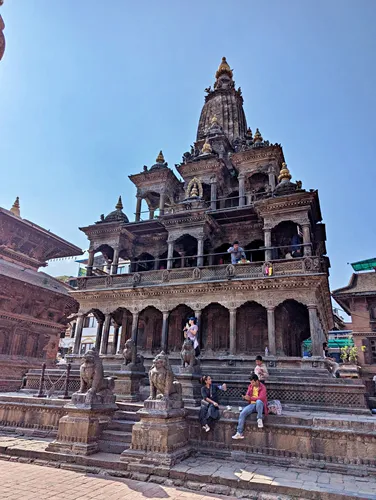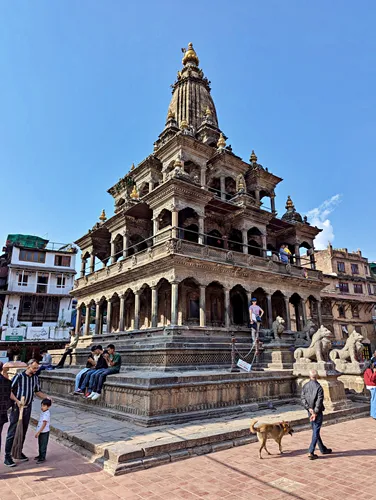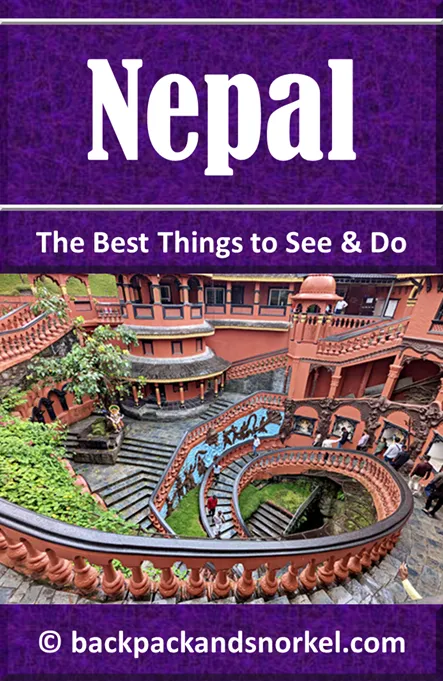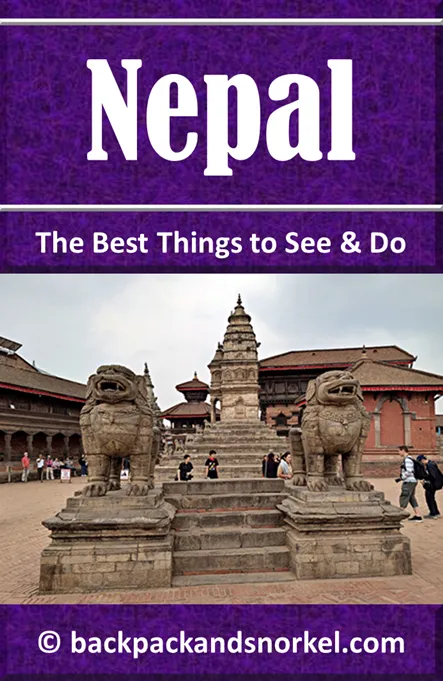Krishna Mandir in Patan Durbar Square: Your Guide to the Stone Marvel - Nepal Purple Travel Guide
(map, reviews)
This is Premium Content! To access it, please download our
Backpack and Snorkel Purple Travel GuideAmong the many historic temples in Patan Durbar Square, Krishna Mandir stands out for its unique architecture, intricate carvings, and deep religious significance. Built entirely from stone in the early 17th century, it remains one of the finest examples of Shikhara-style temple architecture in Nepal — a rarity in a valley otherwise dominated by tiered pagoda structures.




Here at Backpack and Snorkel Travel Guides, we typically promote self-guided walking tours.
But we realize that not everybody likes to walk by themselves in a foreign city. So, just in case that you rather go with ab guide: NO PROBLEM! Please see the Viator tours below.
free GuruWalk tours
paid Viator tours
Origin of the Name Krishna Mandir
The name Krishna Mandir translates to ‘Temple of Krishna’, honoring Lord Krishna, the beloved Hindu deity known for his wisdom, charm, and heroic exploits in the Mahabharata. Mahabharata is one of the two major Sanskrit epics of ancient India, the other being the Ramayana. At its core, the Mahabharata tells the story of a dynastic struggle for the throne of Hastinapura, a kingdom ruled by the Kuru clan. The conflict is between two groups of cousins: the Pandavas (five brothers) and the Kauravas (one hundred brothers). This struggle culminates in the Kurukshetra War, a massive and devastating battle. The Mahabharata encompasses a wide range of philosophical and religious teachings, myths, legends, and moral dilemmas. It explores themes of dharma (duty, righteousness), karma, and the complexities of human nature.
History of Krishna Mandir
According to local tradition, King Siddhi Narsingh Malla (reigned 1619–1661) commissioned the temple after seeing Krishna and his consort Radha in a dream, standing at the very spot where the temple now stands.
Unique Architecture and Symbolism of Krishna Mandir
Constructed in 1637 (not in 1667 as some sources claim), Krishna Mandir is built entirely from finely carved stone, following the Shikhara style of northern India in a towering design that contrasts sharply with the surrounding Newar-style buildings. The temple has three stories, each devoted to different deities:
The first floor honors Lord Krishna, with stone friezes depicting scenes from the Mahabharata.
The second floor is dedicated to Lord Shiva.
The third floor venerates Lokeshwar (Avalokiteshvara), reflecting the harmonious blend of Hindu and Buddhist traditions in the Kathmandu Valley.
The walls and pillars are adorned with intricate carvings, showcasing expert craftsmanship and illustrating stories from Hindu epics.
Krishna Mandir - A Living Place of Worship
Krishna Mandir is not just a historic site; it remains an active temple. It comes alive during Krishna Janmashtami, the annual celebration of Krishna’s birth, when thousands of devotees gather to offer prayers and chant hymns well into the night.
Back to your self-guided tour
Author: Rudy at Backpack and Snorkel
Bio: Owner of Backpack and Snorkel Travel Guides. We create in-depth guides to help you plan unforgettable vacations around the world.
Other popular Purple Travel Guides you may be interested in:
Like this Backpack and Snorkel Purple Travel Guide? Pin these for later:





